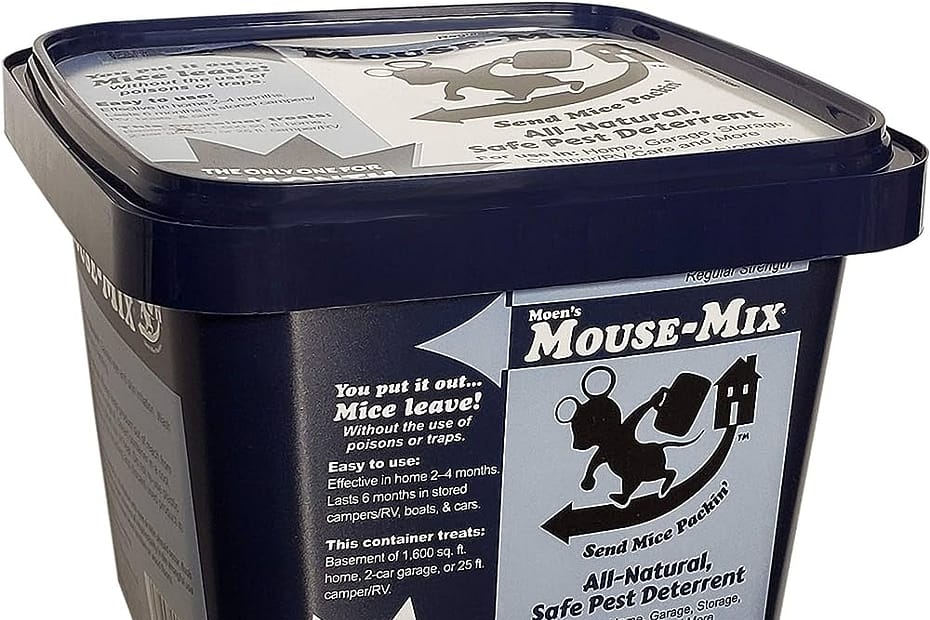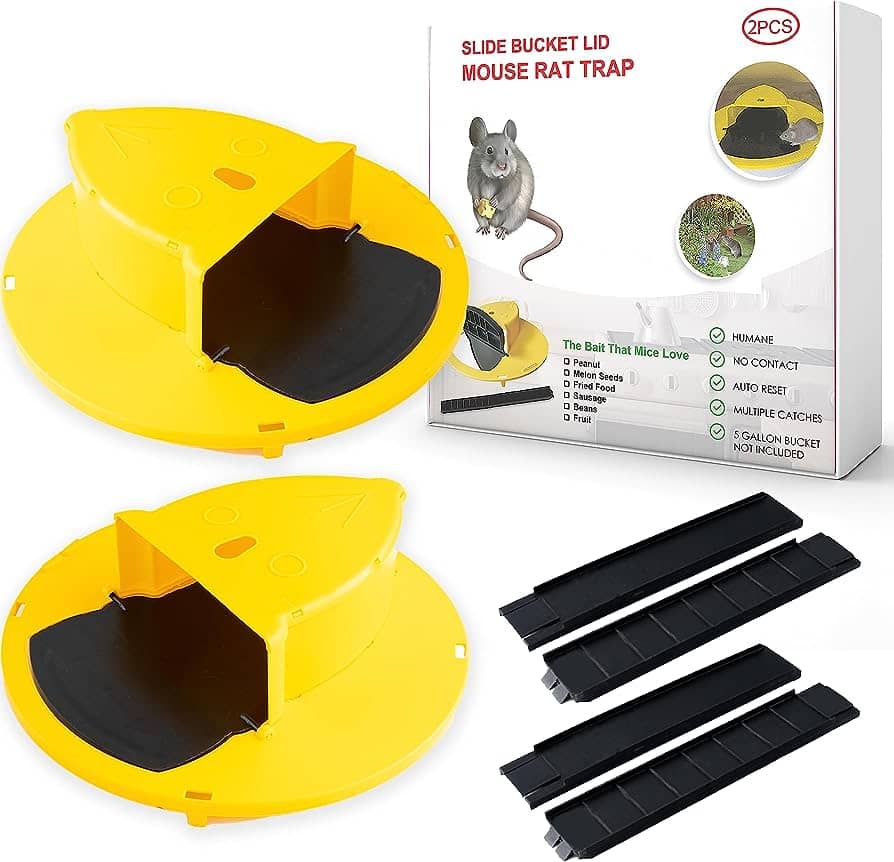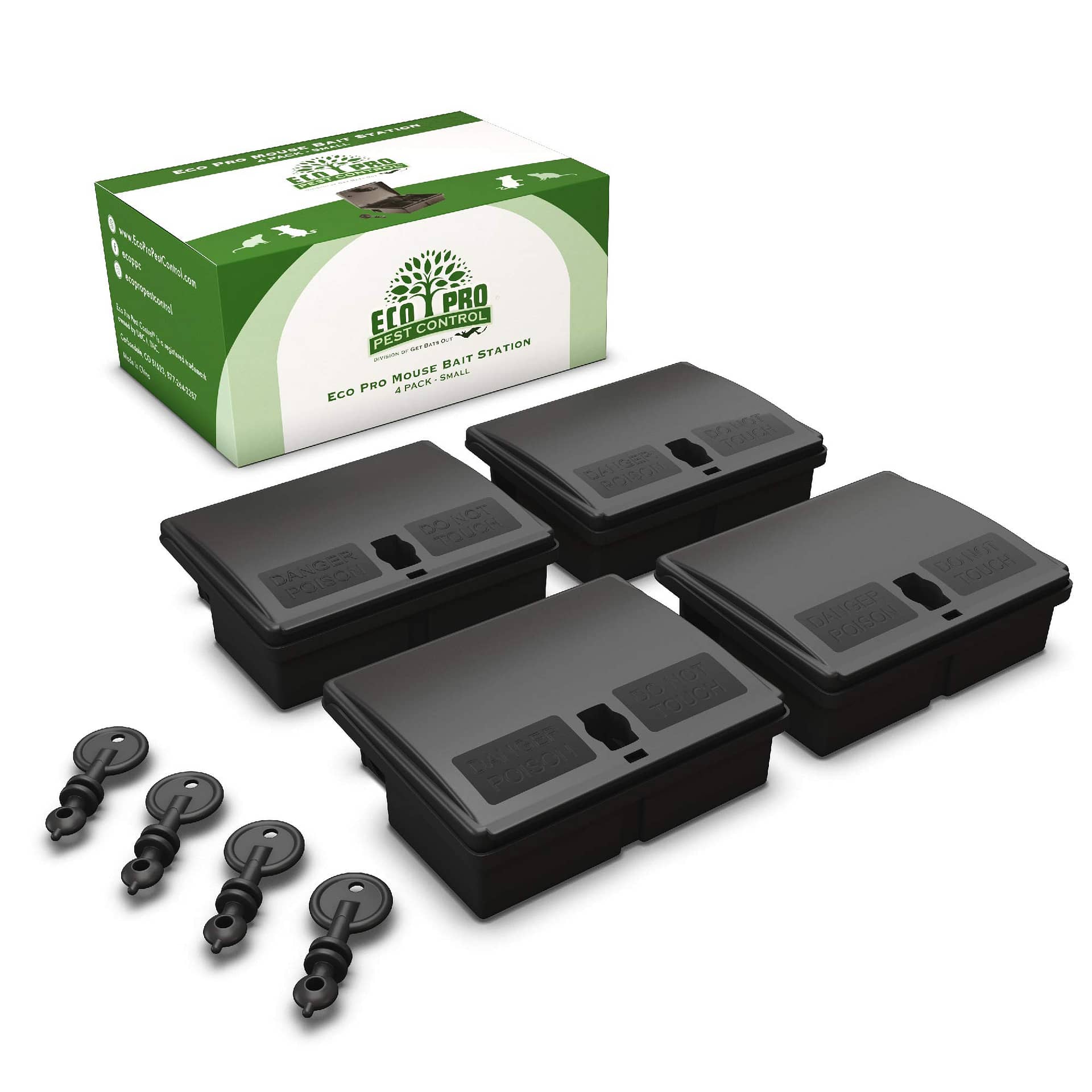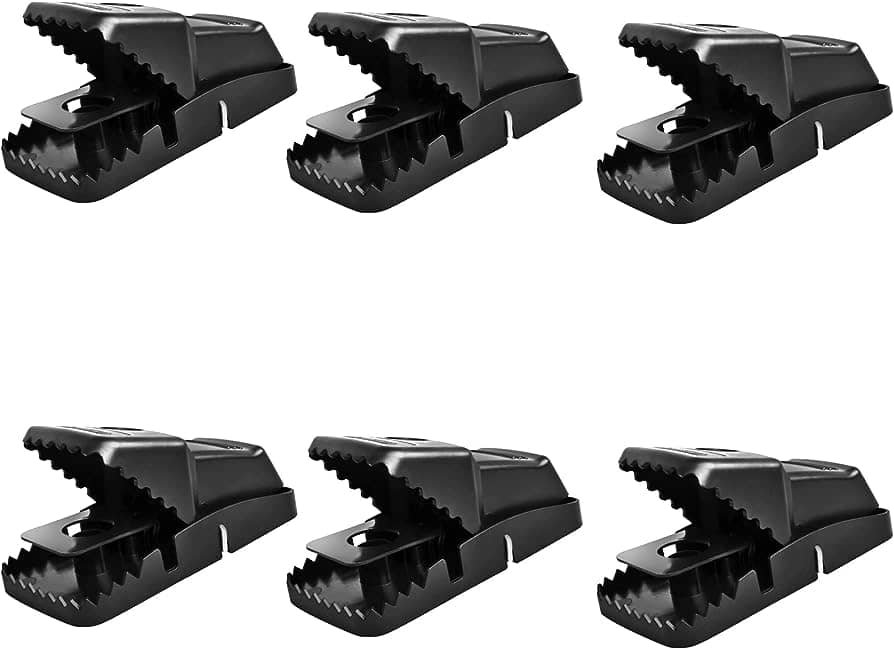Mouse trapping in food storage areas is crucial for safety and prevention. This article will discuss the importance of preventing mice from entering food storage areas and provide effective methods to trap and remove them.
We will explore the potential risks mice pose to food safety, as well as the steps to take in order to eliminate them from your storage area. By implementing these measures, you can ensure that your food storage remains free from mice and maintains the highest standards of safety and hygiene.
Recognizing The Signs Of Mouse Activity
Recognizing the signs of mouse activity is crucial for ensuring safety and prevention in food storage areas. By being vigilant and observant of droppings, gnaw marks, and strange odors, steps can be taken to trap and remove mice effectively.
Mouse infestations in food storage areas can be a real nuisance and a threat to the safety and hygiene of your kitchen. It’s important to be able to recognize the signs of mouse activity to take prompt action and prevent potential health hazards.
Here are some key indicators you should be on the lookout for:
Droppings In Food Storage Areas:
- Presence of small, dark, and pellet-like droppings in and around food storage areas.
- Droppings can be found in cupboards, shelves, drawers, and other spaces where food is stored.
- Mouse droppings can carry diseases and should be cleaned up promptly and safely to avoid the risk of contamination.
Gnaw Marks On Packaging And Food Containers:
- Noticeable bite marks and gnawing on food packaging, boxes, and containers.
- Mice have sharp front incisor teeth that constantly grow, leading them to gnaw on various materials to keep their teeth in check.
- Look out for chewed-through plastic, cardboard, and even metal containers as potential signs of mouse presence.
Scampering Sounds In The Walls Or Ceiling:
- Faint scratching or scampering sounds coming from inside walls, ceilings, or spaces near your food storage areas.
- Mice are agile climbers and may take shelter and build nests in hidden areas.
- Keep in mind that mice are primarily nocturnal, so these sounds are most likely to be heard during the night.
Being aware of these clear indications can help you identify and act upon a potential mouse problem swiftly. It’s essential to implement effective pest control measures and maintain proper hygiene practices to ensure the safety of your stored food. Remember, prevention is key to keeping your kitchen mouse-free and your stored food uncontaminated.
Potential Dangers Of Mice In Food Storage Areas
Mouse trapping in food storage areas is essential for safety and prevention. These areas pose potential dangers due to the risk of contamination from mice, emphasizing the need for effective measures to trap and control them.
Mice can pose several potential dangers when they infiltrate food storage areas. These dangers can include contamination of food with urine, droppings, and hair, health risks associated with mouse-borne diseases, and structural damage to buildings and electrical wiring. It is crucial to be aware of these risks and take appropriate preventive measures to ensure the safety and hygiene of your food storage areas.
Contamination Of Food With Urine, Droppings, And Hair:
- Mice are notorious for leaving behind a trail of urine, droppings, and hair as they scuttle around food storage areas.
- The presence of mouse urine can contaminate food items, making them unsafe for consumption.
- Droppings from mice can harbor harmful bacteria and pathogens, increasing the risk of foodborne illnesses.
- Mice commonly shed their hair, which can easily find its way into food packages or storage containers, further compromising its safety.
Health Risks Associated With Mouse-Borne Diseases:
- Mice are known carriers of various diseases that can be transmitted to humans through direct contact or consumption of contaminated food.
- Hantavirus, salmonellosis, and leptospirosis are examples of diseases associated with mice.
- These diseases can cause a range of symptoms, from mild gastrointestinal distress to more severe illnesses that require medical attention.
- Individuals with compromised immune systems, such as the elderly, young children, or pregnant women, are particularly vulnerable to these mouse-borne diseases.
Structural Damage To Buildings And Electrical Wiring:
- Mice have a destructive knack for gnawing on various materials, including wood, plastic, and electrical wires.
- Their incessant chewing can lead to structural damage to walls, floors, and furniture in food storage areas.
- Gnawed electrical wires pose a fire hazard and may result in short circuits or electrical failures.
- Structural damage can also create entry points for other pests, increasing the likelihood of further infestations.
It is essential to be proactive in preventing mice from infiltrating food storage areas to mitigate these potential dangers. Implementing proper sanitation practices, sealing entry points, and employing traps or professional pest control services can go a long way in ensuring the safety and hygiene of your food storage areas.
Importance Of Proper Mouse Trapping
Proper mouse trapping is crucial in food storage areas for safety and prevention. It helps safeguard against contamination and potential health hazards.
:
Having a proper mouse trapping strategy is crucial when it comes to maintaining a safe and hygienic environment in food storage areas. The presence of mice in these spaces can lead to contamination and pose serious health risks. Implementing effective mouse trapping methods not only helps prevent further infestation but also ensures food safety.
Let’s delve into why proper mouse trapping is essential and discover the steps you should take.
Preventing Further Infestation:
To prevent mice from further infesting the storage areas, here are some key considerations:
- Identify entry points: Inspect the area thoroughly to identify all possible entry points for mice. Seal any gaps or cracks in walls, floors, and ceilings that could serve as potential access points.
- Maintain cleanliness: Regularly clean the storage area, removing any potential food sources or nesting materials that could attract mice.
- Use snap traps: Deploy snap traps strategically in areas where mice are likely to be active. Place traps along walls, behind appliances, and near any signs of mouse activity.
- Regularly check and reset traps: Check the snap traps frequently, ideally every 24-48 hours, to ensure captured mice are promptly removed and traps are reset.
- Dispose of captured mice properly: When disposing of captured mice, use gloves and place them in sealed plastic bags before placing them in outdoor garbage bins.
- Monitor and address any new signs of infestation: Keep a vigilant eye on the storage area, and if you notice any new mouse activity, take immediate action to prevent a new infestation from taking hold.
Ensuring Food Safety In Storage Areas:
It is imperative to protect the integrity and safety of the stored food. Here’s how proper mouse trapping aids in ensuring food safety:
- Prevents contamination: By trapping and removing mice effectively, you reduce the risk of contamination caused by their droppings, urine, or fur coming into contact with the stored food items.
- Minimizes health risks: Mice are carriers of various diseases and pathogens that can contaminate food and negatively impact human health. Proper trapping measures help prevent the spread of these potential hazards.
- Preserves product quality: Mice not only contaminate food but can also cause physical damage to packaging or containers. Effective trapping minimizes the chances of product spoilage and degradation.
Maintaining A Hygienic Environment:
To maintain a hygienic environment in food storage areas, consider the following:
- Regular cleaning: Ensure that the storage area is cleaned regularly to remove any spilled food, crumbs, or other debris that may attract mice.
- Proper storage practices: Store food items in secure, airtight containers to minimize accessibility for mice and reduce the risk of contamination.
- Eliminate hiding spots: Declutter the storage area and remove potential hiding spots for mice, such as stacked boxes, unused equipment, or piles of materials.
- Good hygiene practices: Encourage employees or individuals handling food storage areas to practice proper hand hygiene and follow established sanitation protocols.
Remember, an effective mouse trapping strategy involves eliminating entry points, removing attractants, and regularly monitoring and addressing any signs of infestation. By prioritizing proper mouse trapping techniques, you can maintain the safety and cleanliness of your food storage areas while ensuring the protection of stored food items.
Choosing The Right Mouse Traps
Ensure the safety of your food storage areas by selecting the right mouse traps. Prevent mice infestations with effective trapping methods.
Snap Traps For Quick And Effective Trapping
Snap traps are a popular choice for effectively trapping mice in food storage areas. These traps consist of a spring-loaded mechanism that snaps shut when triggered by the mouse. Here are some key points to consider when choosing snap traps:
- Design: Snap traps are typically made of plastic or wood and come in various sizes. Choose a trap with a sturdy construction that can withstand repeated use.
- Bait placement: Place a small amount of bait, such as peanut butter or cheese, on the trigger mechanism of the snap trap. Mice are attracted to the scent and taste of these foods, increasing the chances of a successful capture.
- Location: To increase the likelihood of trapping a mouse, position the snap trap along walls or near entry points where mice are likely to travel.
- Safety: Ensure that snap traps are placed in areas inaccessible to children and pets to prevent accidental injuries. Always follow the manufacturer’s instructions for safe handling and disposal of trapped mice.
Live Traps For Humane Capture And Release
If you prefer a humane approach to mouse trapping, live traps are an excellent choice. Live traps allow you to capture mice without causing harm, allowing for their safe release elsewhere. Consider the following factors when selecting live traps:
- Size: Choose a live trap that is appropriate for the size of mice in your area. Traps with small mesh spacing or narrow entrances are effective in preventing mouse escape.
- Bait selection: Opt for attractants that appeal to mice, such as grains or seed-based baits. This will entice mice into the trap, increasing the chances of capture.
- Release location: When releasing trapped mice, ensure they are released at least a mile away from your food storage area to prevent their return.
- Regular monitoring: It’s essential to regularly check live traps to prevent mice from enduring unnecessary stress or becoming distressed due to extended confinement.
By choosing the right mouse trap, you can effectively control and prevent mice infestations in your food storage areas. Whether you opt for snap traps or live traps, following these guidelines will increase your chances of successfully trapping mice while ensuring the safety of both humans and rodents.
Placing Traps Strategically
Placing traps strategically can effectively prevent mice infestation in food storage areas, ensuring safety and hygiene. Eliminate the risk of contamination by implementing proper prevention measures and regular monitoring of the traps. Safeguard your food storage from these unwanted pests using strategic trap placement.
Mouse Trapping In Food Storage Areas: Safety And Prevention
Mice can pose a significant risk to the safety and hygiene of food storage areas. To effectively control their presence, it is crucial to strategically place traps in specific locations. By knowing where to position traps, you can maximize their effectiveness in catching mice and prevent contamination of food supplies.
Here are some key tips for placing traps in food storage areas:
- Identifying high-risk areas for mouse activity:
- Pantries and food storage cabinets are prime areas for mouse infestation. Mice are attracted to the abundance of food sources found in these locations.
- Inspect for any visible signs of mouse activity, such as droppings, chewed packaging, or gnaw marks on stored items. These indicators can help determine areas where mice frequent the most.
- Placing traps along walls and near entry points:
- Mice tend to travel along walls as they navigate their way through a space. By placing traps parallel to walls, you increase the likelihood of capturing mice that are passing through.
- Pay close attention to entry points, such as cracks in walls, gaps under doors, or holes in ceilings. These are common access points for mice. Set traps near these areas to intercept their movement.
- Using multiple traps to cover a larger area:
- Deploying multiple traps is highly recommended, especially in larger food storage areas. This approach increases the chances of capturing mice and helps cover a larger space effectively.
- Space out the traps evenly, ensuring they are within a reasonable distance from each other. This distribution improves the chances of intercepting mice from various directions.
- Choosing suitable trap types:
- Snap traps, electronic traps, and glue traps are among the commonly used types of mouse traps. Consider the nature of your food storage area and choose the appropriate trap that aligns with your goals and preferences.
- It’s vital to place the traps in locations inaccessible to children and pets to prevent accidents and ensure safety.
- Monitoring and regular maintenance:
- Regularly check the traps to determine if any mice have been caught. Inspect and replace bait if necessary.
- Clean and sanitize the traps after every use to maintain hygiene standards in the food storage area.
By strategically placing traps in food storage areas, you can effectively control mouse activity and minimize the risk of contamination in your stored food supplies. Remember to identify high-risk areas, place traps along walls and near entry points, use multiple traps when necessary, select suitable trap types, and monitor and maintain the traps regularly.
Taking these steps will help create a safer and more hygienic environment for your food storage needs.
Proper Sanitation Practices
Maintain proper sanitation practices to prevent mouse infestation in food storage areas. Implement effective mouse trapping techniques for safety and prevention.
Keeping Food Storage Areas Clean And Tidy:
- Regular cleaning: Clean the food storage areas on a regular basis to maintain cleanliness and prevent the accumulation of dirt, debris, and potential food sources for pests.
- Proper waste disposal: Dispose of trash and waste properly to avoid attracting pests. Use sturdy trash bins with tight-fitting lids and empty them regularly.
- Organize shelves: Keep shelves tidy and organized, ensuring that all items are neatly arranged. This minimizes the likelihood of spills, clutter, and hiding places for pests.
- Sweeping and mopping: Regularly sweep and mop the floors in food storage areas to remove crumbs, spills, and other potential food sources.
- Clean spills immediately: Spills should be promptly cleaned to prevent pests from being attracted to the area. Use soap and water or appropriate cleaning solutions for different surfaces.
- Label and rotate food items: Properly label and rotate food items to ensure that older products are used first. This practice helps prevent the accumulation of expired or spoiled food that can attract pests.
- Maintain good lighting: Ensure that food storage areas are well-lit to discourage pests. Install bright lights and regularly check and replace any faulty bulbs.
- Store food in sealed containers: Store all food items in sealed containers made of sturdy material, such as glass or plastic. This prevents pests from accessing and contaminating the food.
- Regular pest inspections: Schedule regular inspections from a professional pest control service to identify any signs of pests early on. This allows for timely intervention and prevention measures.
- Train employees: Educate and train employees on proper sanitation practices and the importance of maintaining clean and tidy food storage areas. Encourage them to report any signs of pests immediately for swift action.
By following these proper sanitation practices in food storage areas, you can create a hygienic environment that deters pests and ensures the safety of stored food.
Removing Potential Sources Of Attraction
Prevent mice infestations by removing potential attractions in food storage areas. Ensure safety and hygiene by implementing effective mouse trapping and prevention strategies.
Mouse trapping in food storage areas can be a serious concern for homeowners and businesses alike. These pesky rodents are not only unsanitary, but they can also cause extensive damage to stored food items. To ensure the safety of your food storage areas and prevent mice from being attracted to them, it is important to take proactive measures.
One effective strategy is to remove potential sources of attraction. In this section, we will explore two key measures that can help in this regard.
Storing Food In Airtight Containers
- By storing your food in airtight containers, you can significantly reduce the chances of mice being attracted to your storage areas.
- Airtight containers create a strong barrier that prevents the smell of food from permeating into the surroundings.
- Additionally, these containers make it more difficult for mice to access the food, as they are designed to be tamper-proof.
- Make sure to store all your dry goods, including grains, cereals, and snacks, in airtight containers to minimize the risk of a mouse invasion.
Removing Clutter And Debris In Storage Areas
- Clutter and debris not only provide hiding spots for mice but can also serve as potential food sources.
- Regularly inspect your storage areas and remove any unnecessary items, such as cardboard boxes or unused packaging materials.
- Keep the area clean and well-organized, ensuring there are no crumbs or food spillages left behind.
- Consider using wire shelving or plastic storage bins to elevate your items off the ground, reducing the chances of mice accessing them.
By following these simple steps, you can greatly reduce the attraction of mice to your food storage areas. Remember, prevention is key when it comes to dealing with these unwanted pests. Take the necessary precautions to create an environment that is unappealing to mice, keeping your stored food safe and free from contamination.

Credit: mousemix.us
Regular Monitoring And Maintenance
Ensure the safety of your food storage areas with regular monitoring and maintenance to prevent mouse trapping incidents. This proactive approach will safeguard against potential health risks and ensure a clean and secure environment for your food storage needs.
Regular monitoring and maintenance of mouse traps in food storage areas is crucial for ensuring the safety and prevention of infestations. By proactively checking traps and conducting periodic inspections, you can effectively manage and address any signs of mouse activity.
Here are key steps to follow:
- Checking traps regularly for catches: To assess the effectiveness of your trapping efforts, it’s important to regularly check the traps for any mouse catches. This allows you to promptly dispose of captured mice and reset the traps for ongoing protection. Consider the following points:
- Inspect the traps at least once a day to maximize their efficiency.
- Safely discard any trapped mice according to proper disposal guidelines.
- Reset the traps after removing any caught mice to maintain continuous protection.
- Conducting periodic inspections for signs of activity: In addition to checking traps, conducting regular inspections in the food storage areas can help identify signs of mouse activity and take immediate preventive measures. Here’s what you should do:
- Look for gnaw marks on food packages, equipment, or structures, as these indicate the presence of mice.
- Monitor for droppings, which are small dark pellets scattered around active areas.
- Keep an eye out for nesting materials, such as shredded paper or fabric, that mice may use to build their nests.
- Inspect for chewed wires or cables, which can pose a fire hazard and may indicate an infestation.
By following these monitoring and maintenance practices, you can stay ahead of potential mouse infestations in food storage areas. Regular checking of traps and conducting inspections will allow you to take immediate action, ensuring the safety and well-being of your stored food.
Frequently Asked Questions Of Mouse Trapping In Food Storage Areas: Safety And Prevention
What Can We Do To Avoid And Control Mice In A Food Storage Area?
To avoid and control mice in a food storage area, take these steps: Seal all entry points and cracks. Keep food in sealed containers. Regularly clean the area. Set traps and use rodent repellents.
How Do I Protect My Storage Unit From Mice?
To protect your storage unit from mice, follow these steps: 1. Seal any gaps or openings in the unit to prevent mice from entering. 2. Keep the unit clean and free of food debris to eliminate attractants. 3. Use mouse traps or bait stations as a proactive measure against mice.
4. Regularly inspect the unit for signs of mice and take immediate action if necessary.
How Do I Protect My Food From Mice In My Pantry?
To protect your food from mice in your pantry: 1. Store food in airtight containers. 2. Regularly clean up spills and crumbs. 3. Keep pantry neat and organized. 4. Use mouse traps or call pest control if necessary.
What Should A Food Handler Do First If They See A Mouse In A Store Room?
Immediately report the sighting of a mouse in the store room to the appropriate authorities.
Conclusion
In our quest to maintain a safe and clean environment in our food storage areas, it is crucial to address the issue of mouse trapping effectively. By understanding the potential dangers and implementing necessary preventative measures, we can ensure the safety of our food and the well-being of those who consume it.
Regular inspections, proper food storage techniques, and the use of effective traps can significantly reduce the risk of mouse infestation. Additionally, maintaining a clean and clutter-free environment is essential to discourage mice from entering food storage areas. Remember, prevention is always better than dealing with an infestation.
So, be proactive in taking the necessary steps to keep mice at bay. By following these guidelines, we can create a secure and hygienic food storage area that promotes the health and safety of everyone involved. Let’s stay vigilant and prioritize the well-being of our food and our loved ones.




